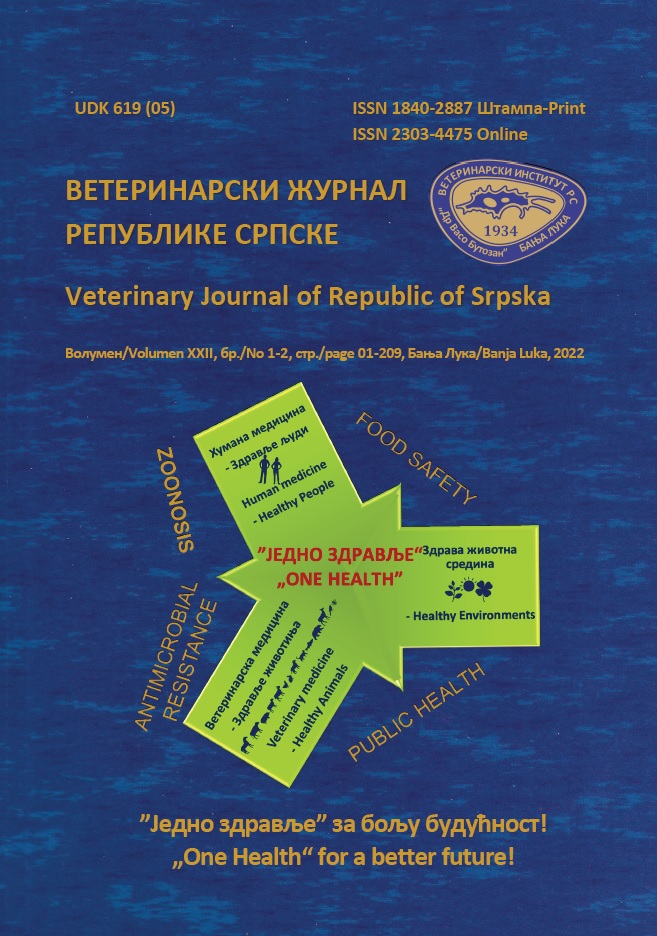MICROBIOLOGICAL SAFETY AND PHYSICOCHEMICAL QUALITY PARAMETERS OF GOAT AND SHEEP CHEESE FROM HERZEGOVINA
DOI:
https://doi.org/10.7251/VETJEN2201058SAbstract
Cheese is a semi-solid or solid milk product, obtained by curdling milk and separating the curds from the whey. The examination included 46 samples of cheese produced on agriculture farms and small mini-dairies in the territory of Herzegovina, with the emphasis that most of the samples originate from the southern sub-Mediterranean and Mediterranean regions of Herzegovina. The goal of the study was to determine the microbiological safety and physicochemical quality parameters of cheeses that are marketed as fresh goat cheese, semi-solid goat cheese, and sheep and goat bellows cheese. Of the total number of analyzed samples, 49.22% did not meet the requirements of the physicochemical and microbiological parameters of the quality, where 36.22% did not meet the physicochemical quality, and 13% did not meet the microbiological quality due to an increased number of β glucuronidase positive Escherichia coli. The presence of β glucuronidase positive Escherichia coli in cheese samples indicates insufficient hygiene during the technological process of cheese production itself. Pathogenic microorganisms Salmonella spp and Listeria monocytogenes were not isolated, and the number of coagulase-positive staphylococci and Staphylococcus aureus was within the permitted limits. This study indicates that it is necessary to standardize the physicochemical parameters in the production of cheese, as well as the use of exclusively autochthonous raw materials in the production of individual small producers and in mini-dairies engaged in this production, as is the case with the industrial production of these products in that area.

